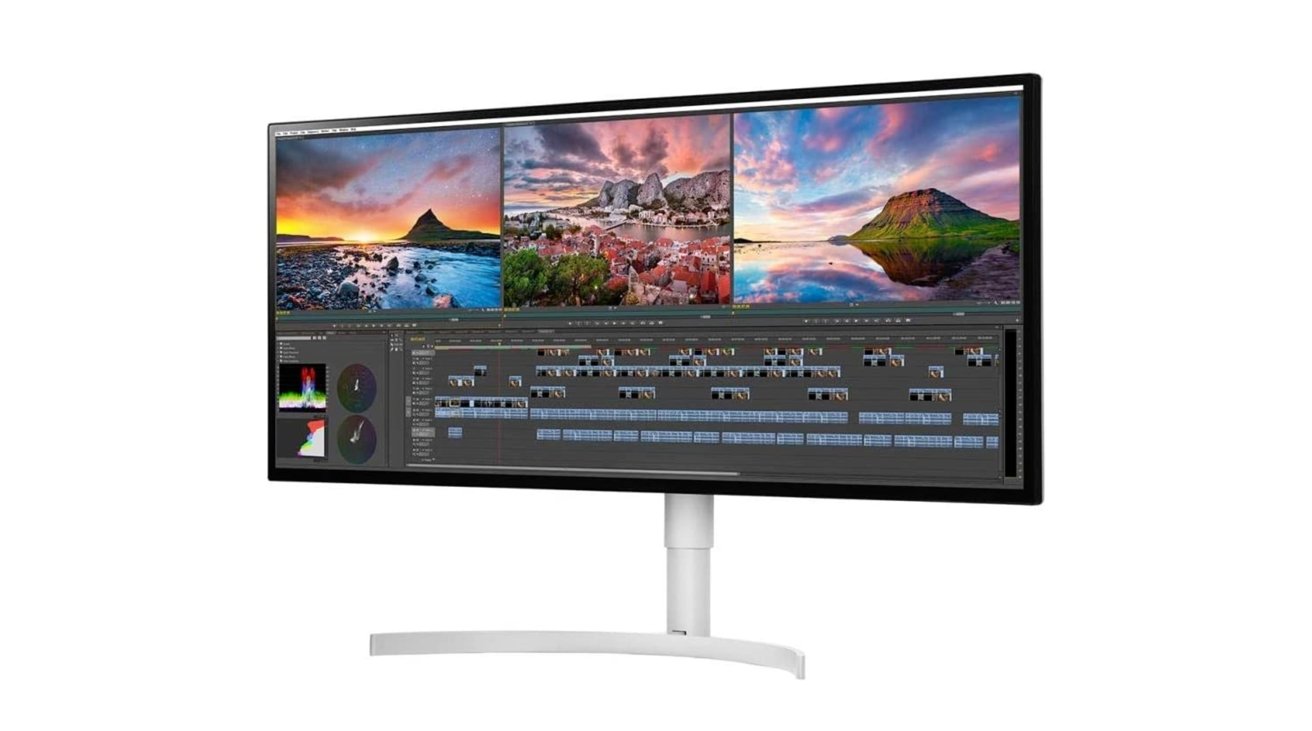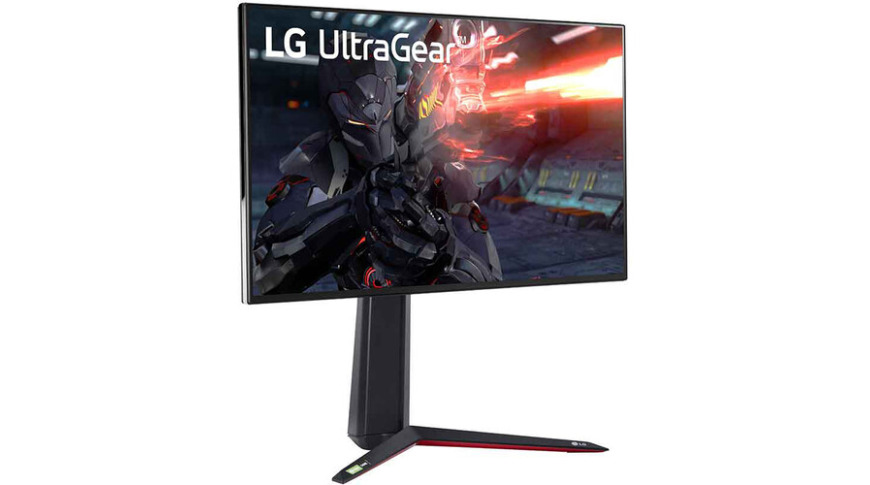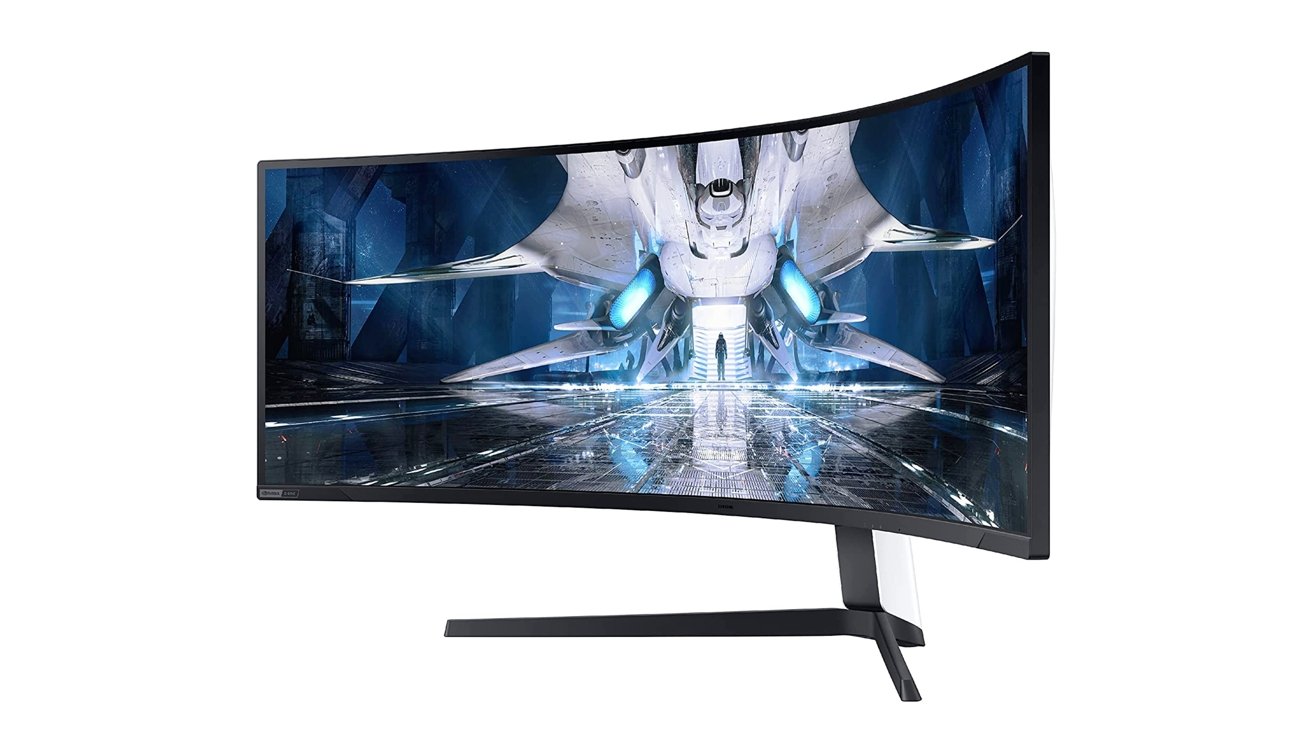There are thousands of monitors on the market, and choosing the right one can be a difficult chore. We've collected together the best monitors you should be looking at to pair with your M1-based Mac.
Apple's Mac lineup covers many areas, ranging from the desktop-based Mac mini to the mobile MacBook Air. To maximize your usage of your Mac, you ideally need the best available display for it, and while some models include a screen, there's no harm in looking for alternates.
For an item like a Mac mini, you obviously need a display to use it. However, having an external display can be useful for MacBook models too, as a second display for productivity, or simply to see the screen while the Mac is closed and stowed away.
If you're in the market for a new screen, here are our selections for the kinds of displays you should be considering to buy.
Best all-around monitor
The Dell UltraSharp U2720Q 27-inch monitor is a long-standing recommendation for anyone who needs a decent monitor, and it continues to be so. On asking the AppleInsider editorial team for suggestions, it was the first one openly suggested.
While the monitor isn't Thunderbolt capable, it still offers numerous ways to connect your Mac to it, including HDMI and DisplayPort. The included USB-C port supports DisplayPort alt mode for connecting to your M1-based Mac.
That USB-C cable not only drives video, as it also handles data and power, including 90 Watts of power delivery. Add in the built-in three additional USB-A ports, and it becomes a one-cable docking solution for your mobile MacBook.
The biggest difference between this monitor and the more expensive ones from LG is the lack of Thunderbolt support. Data carried over the USB-C connection will be 10GB/s, which is suitable for peripherals and external drives, but you'll want to connect your devices directly to the Mac if you want even more bandwidth.
This monitor has 4K resolution at 3,840x2,160, HDR 400, 95% P3 color gamut, and 60Hz refresh rate. The included stand allows it to be used vertically or horizontally, depending on your needs.
You can get the Dell U2720Q Ultrasharp 27-inch monitor for $638.95 at Amazon.
Best budget 4K monitor
If you're on a budget, you could go for a monitor with a 1080p resolution, but for not much more, you could pick up a 4K-resolution version instead.
The BenQ EL2870U is a 28-inch 4K monitor aimed at gaming, but it's also useful in many other areas. Chiefly it has that 3,840x2,160 resolution and a 60Hz refresh rate, dual HDMI 2.0 and DisplayPort inputs, 2-watt speakers, and a headphone jack.
While it is more a straightforward monitor that doesn't offer things like USB-C or power delivery, it still provides quite a few essential or valuable elements. Like its 1,000:1 contrast ratio, a 5ms response time, and 10-bit color.
You also get features such as a low blue light mode, and Brightness Intelligence Plus, which dynamically changes the brightness based on the light in the room. This can help protect your vision over time by minimizing eye straight from staring at an overly bright display for too long.
You can acquire the BenQ EL2870U 28-inch 4K monitor for $249.99 from Amazon, $50 off the list price.
Best value 4K monitor with power delivery
If you want a large monitor with a 4K resolution, but you also need power delivery to your MacBook, consider the Monoprice CrystalPro 4K UHD monitors. Measuring 28 inches and 32 inches, the two offer the same roster of specifications but in two different sizes.
Both monitors have a 3,840x2,160 resolution with a 60Hz refresh rate, use a Vertical-Alignment panel rather than TN panel, and a headphone jack and speakers for audio.
The connections are the important part, as it includes a pair of HDMI 2.0 ports, one DisplayPort 1.2 connection, and one USB Type-C port. This latter port can offer power, data, and video in one cable to your connected MacBook.
For power, it offers 65W of power delivery, enough to recharge a 13-inch MacBook Pro while in use. A pair of USB-A ports in the monitor also allow for other devices to be connected up, expanding the connectivity of the host device by two more ports.
The monitors are also supplied with a fully articulating stand with height, vertical tilt, and horizontal swivel adjustments.
Monoprice is selling both CrystalPro Monitors through its website, with the 28-inch and 32-inch models priced at $359.99 and $399.99 respectively.
Best Thunderbolt monitor
The LG UltraFine Thunderbolt monitors continue to be the best third-party monitor option for Mac users, combining great displays with the Mac-friendly Thunderbolt 3 connectivity.
Using Thunderbolt 3, users can connect a single cable to their Mac or MacBook that handles power, data, and video. While this is similar to USB-C in principle, you gain Thunderbolt 3-specific benefits, including daisychaining the monitor with other devices, and having up to 40Gbps of bandwidth available.
In the case of the 34-inch UltraFine 4K UHD LED Monitor with Thunderbolt, model number 34BK95U-W, Thunderbolt enables video and data transfers and up to 85W of power delivery. Along with the Thunderbolt 3 port, you also have two USB-A ports, DisplayPort, and two HDMI inputs, as well as a headphone out.
The virtually borderless 21:9 UltraWide display has a resolution of 5120 by 2160, making it wider in resolution than a 4K screen. With VESA DisplayHDR 600 support with up to 600 nits of brightness, the Nano IPS display offers 98% of the DCI-P3 color space, making it ideal for content creators working in video.
The LG UltraFine 34-inch Nano IPS LED 5K display retails for $1,499 and can be ordered from Amazon.
Best performance monitor
Gaming monitors often come with bright LED backlights, aggressive design, and expensive price tags. The LG UltraGear 27-inch gaming monitor is a performance powerhouse with all the specs you'd want when connecting a Mac.
The monitor is comparable to the LG UltraFine 5K mentioned before, but with quite a few key differences. Sure, you won't find Thunderbolt 3, and its 3840 x 2160 4K display is a little smaller, along with its 27-inch size, but it does have HDR10 and 98% P3 color gamut.
The 3840x2160 4K display also has a 144Hz refresh rate and a 1ms response time, far faster than most other 4K monitors on the market. When using compatible PCs, it has AMD FeeSync and Nvidia G-Sync capabilities, though those are more PC-oriented features than Mac ones.
The monitor's rear has an RGB LED ring that will shine colors on a nearby wall depending on settings made with proprietary software or via in-monitor settings. This can be turned off entirely or show static colors as desired, but you'll probably want it to be active for the sake of your eyes.
Connectivity is offered by DisplayPort, two HDMI inputs, and a 3.5mm headphone jack. It can also act as a USB hub, with a pair of USB 3.1 Gen 1 connections offered alongside a Type-B upstream connection.
The LG UltraGear 27GN95B-B is in limited supply and can be ordered from third-parties at Amazon or backordered for $819.99 at B&H.
Best UltraWide monitor
Ultrawide monitors have become popular as an alternative to multiple display setups, giving you the screen estate of two screens with the footprint of one. This will be especially important for M1-based MacBook Air and MacBook Pro users since you can only connect one external display.
The Samsung Odyssey Neo G9 is one such ultra-wide screen, consisting of a 49-inch curved gaming monitor. The giant curved screen offers the equivalent of two QHD monitors but in a single very wide panel.
QHD is the "2K" or 1440p resolution that fits between HD and 4K. The ultrawide monitor's 5120x1440 resolution gives it an aspect ratio of 32:9, making it extremely wide compared to its height.
Furthermore, it also is a mini LED-backlit display, using 2,048 local dimming zones to offer what Samsung calls Quantum HDR2000, namely HDR support at up to 2,000 nits of brightness. It also boasts a static contrast ratio of 1 million to 1, and 95% coverage of the DCI color gamut.
Naturally, as a gaming monitor, it also benefits from many gaming-related extras, including a 1ms response time, a 240Hz refresh rate, Freesync Premium Pro support, and G-Sync compatibility.
Connectivity is provided by 2 HDMI 2.1 ports and one DisplayPort 1.4 connection, as well as options for it to work as a two-port USB 3.0 hub, and a headphone jack. The breadth of connection options comes in handy for another feature, with the ability to use picture-in-picture to have video from two sources side-by-side on the same screen.
You can buy the Samsung 49-inch Odyssey Neo G9 for for $2,499.99 on Amazon.
The Apple monitor
Of course, the best display you can buy is the one sold by Apple itself. The Pro Display XDR is a monster of a monitor, with reference-grade specs and giant price tag.
It's impossible to seriously recommend the Pro Display XDR, realistically, as anyone who really needed one has bought their own by now. However, if you happen to have a few thousand dollars to spend, this will complement any M1-based Mac with its 32-inch display and beautiful design.
Apple compares its Pro Display XDR to professional reference monitors that cost at least $40,000, which could still make it attractive to those entering visually creative fields. The 6016x3384 6K display has a 1 million to 1 contrast and a 10-bit color depth.
M1-based Macs can run the display without issue, but it was originally designed to be used with Apple's Mac Pro. Apple hasn't given any other real options for a self-produced separate display, meaning if you are desperate for an Apple-branded screen, this is your main choice.
The standard Pro Display XDR is discounted to $4,899 with coupon code APINSIDER at Adorama. The stand is not included and can be purchased for $959 ($40 off its $999 retail price).
eGPU options
As a word of warning, Apple's M1-based Macs currently do not support external GPU (eGPU) technology, and while there were initially hopeful signs this may change, it has yet to do so.
But, if you have an Intel-based Mac, you can consider the use of an eGPU to increase performance, provide power to your portable Mac, and in some cases provide legacy ports and networking.
The DIY enclosures generally can't accelerate a monitor that connects over USB-C or Thunderbolt 3, so ideally you should look for HDMI or DisplayPort monitors if you're going that route. But, the eGPU Breakaway Pucks from Sonnet are capable of increasing the performance of USB-C or Thunderbolt 3 displays.
The Radeon RX 5500 XT model of the Sonnet eGPU Breakaway Puck is available at B&H for $599.99. Amazon also stocks the 5500 XT.
If you are confident enough to go down the DIY route, consider Sonnet's Breakaway Box 750 and 750ex eGPU enclosures. The two can accept a macOS-compatible graphics card, and offer 85W of power delivery to a host Mac over Thunderbolt 3.
The EX edition makes the enclosure more useful as a docking station, with the inclusion of four USB 3.2 Gen 1 Type-A ports and a Gigabit Ethernet port.
The Sonnet Breakaway Box 750 and 750ex are available from Amazon for $299 and $349 respectively. These prices exclude the cost of the graphics card itself, which will vary greatly depending on the model and performance.
 Wesley Hilliard
Wesley Hilliard

















 Marko Zivkovic
Marko Zivkovic
 Christine McKee
Christine McKee
 Andrew Orr
Andrew Orr
 Andrew O'Hara
Andrew O'Hara
 William Gallagher
William Gallagher

 Mike Wuerthele
Mike Wuerthele
 Bon Adamson
Bon Adamson




-m.jpg)


